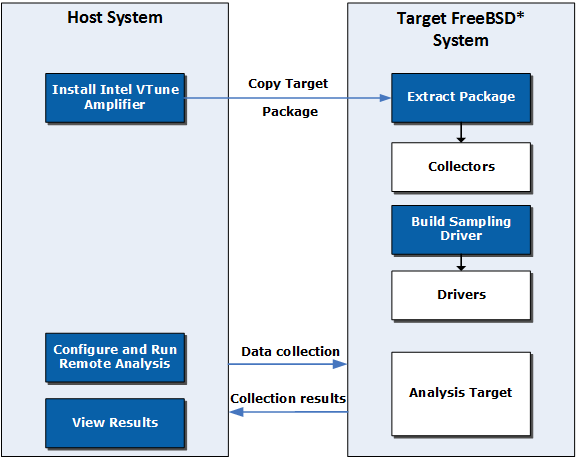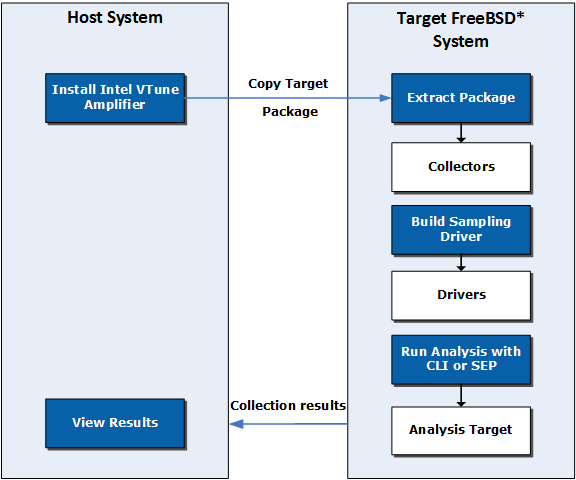Intel® VTune™ Amplifier for Systems allows you to collect performance data on a FreeBSD* target system.
A target package is available for collecting event-based sampling data on a FreeBSD target system either via the remote collection capability or by collecting the results locally on the FreeBSD system and copying them to the host system. The collected results are then displayed on a host system that supports the VTune Amplifier graphical interface. Event-based sampling analysis types (Advanced Hotspots, General Exploration, Memory Access (without heap object allocation tracking), and Custom Event-based Sampling Analysis) are supported on FreeBSD target systems.
Note
You will need a Free BSD license for Intel® System Studio to use VTune Amplifier with a FreeBSD target system.
Remote Collection from Host System

Install VTune Amplifier on your Linux*, Windows*, or macOS* host. Refer to the Installation Guide for your host system for detailed instructions.
Install the appropriate sampling drivers on the FreeBSD target system. For more information, see Preparing a Target FreeBSD* System for Remote Analysis.
Collect performance data using remote analysis from the host system from the VTune Amplifier command line or GUI. For more information, see Remote Analysis Workflow for Linux Systems.
Review the results on the host system.
Native Collection on FreeBSD System

Install VTune Amplifier on your Linux*, Windows*, or macOS* host. Refer to the Installation Guide for your host system for detailed instructions.
Install the appropriate sampling drivers on the FreeBSD target system. For more information, see Preparing a Target FreeBSD* System for Remote Analysis.
Collect performance data using one of the following methods. For more information about each of these methods, see Remote Analysis Workflow for Linux Systems.
Native analysis on the target system using the VTune Amplifier command line.
Native analysis on the target system using the sampling enabling product (SEP) collectors.
Review the results on the host system.